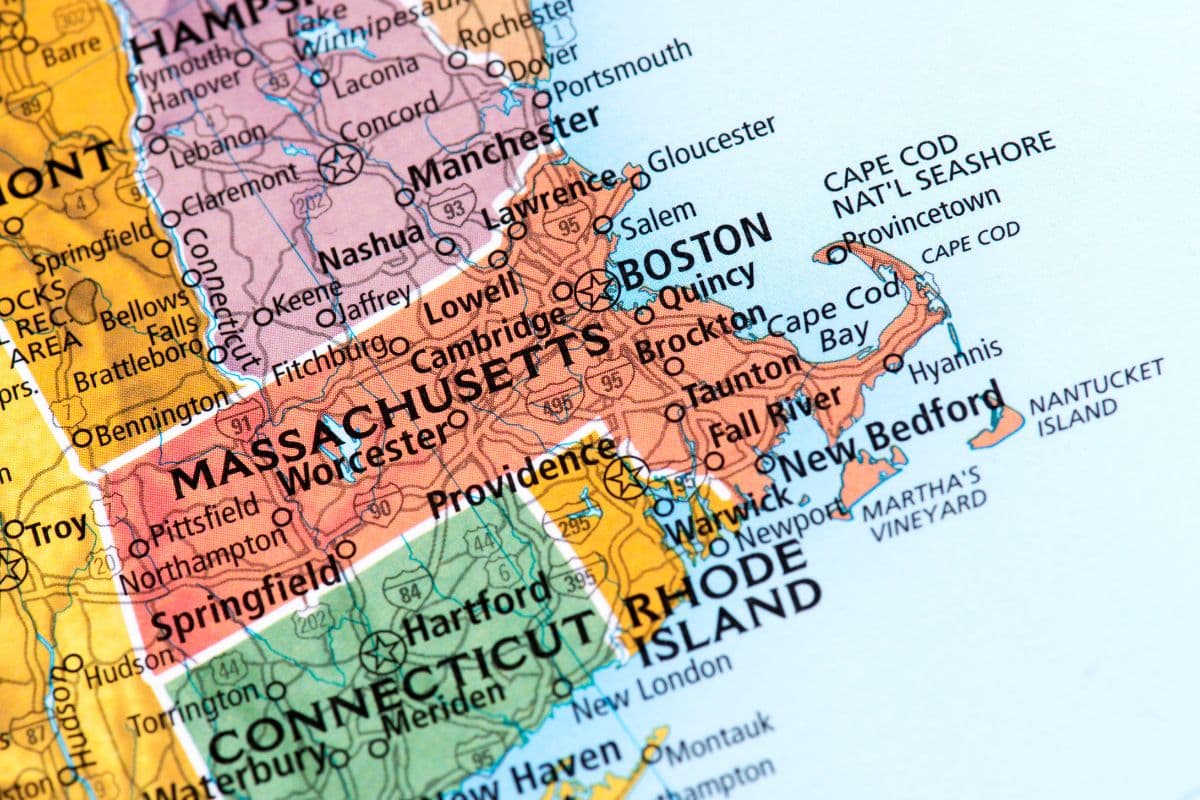Massachusetts gardeners and plant enthusiasts often wonder about their growing zone to make informed decisions about what to plant and when. Understanding your growing zone is essential for successful gardening in this New England state with its distinctive seasonal patterns.
Understanding growing zones in Massachusetts
Massachusetts spans several USDA hardiness zones, primarily falling within zones 5a to 7b. These designations help gardeners determine which plants will thrive in their specific location based on the average annual minimum winter temperatures. The USDA Plant Hardiness Zone Map divides North America into 13 zones, with each zone representing a 10-degree Fahrenheit difference in minimum temperature.
For Massachusetts specifically, the breakdown typically looks like this:
- Western Massachusetts (Berkshires region): Primarily zones 5a to 5b (-20°F to -10°F)
- Central Massachusetts: Mostly zone 5b to 6a (-15°F to -5°F)
- Eastern Massachusetts: Generally zone 6a to 6b (-10°F to 0°F)
- Cape Cod, Islands, and coastal areas: Zones 6b to 7b (0°F to 10°F)
This variation across the state explains why gardeners in Pittsfield face different challenges than those in Boston or on Martha’s Vineyard. The moderating effect of the Atlantic Ocean creates milder conditions along the coast, while the higher elevations in western regions experience colder temperatures.
When planning your garden, remember that microclimates within these zones can also affect growing conditions. Urban areas like Boston often form “heat islands” that may be slightly warmer than surrounding suburbs. Similarly, a south-facing slope protected from wind might support plants from a slightly warmer zone than the official designation suggests.
How Massachusetts growing zones affect your gardening calendar
Your growing zone significantly impacts when to plant and harvest throughout the year. In Massachusetts, the last frost dates vary considerably depending on your location within the state. Western regions typically see final frosts in mid-to-late May, while coastal areas might be frost-free by late April.
Understanding these patterns helps you plan when to start seeds indoors, when it’s safe to transplant seedlings, and when to plant flowers before September for a vibrant fall garden. Zone information also helps determine which perennials will survive Massachusetts winters and which annuals work best in your specific region.
For Massachusetts gardeners, the growing calendar typically follows this pattern:
- Early spring (March-April): Start cool-season crops and hardy annuals
- Late spring (May): Plant warm-season vegetables after danger of frost has passed
- Summer (June-August): Maintain gardens and begin planning fall plantings
- Fall (September-November): Plant spring-flowering bulbs and cool-season crops
- Winter (December-February): Plan next year’s garden and care for indoor plants
If you’re growing herbs like basil, understanding your zone helps determine when to move plants outdoors. Learning how to keep your basil plant alive through Massachusetts’ varying conditions requires adjusting care based on your specific zone conditions.
Best plants for Massachusetts growing zones
Selecting plants well-suited to Massachusetts growing zones increases your chances of gardening success. Native plants are particularly well-adapted to local conditions and provide essential habitat for local wildlife. Many ornamental plants also thrive across Massachusetts zones with proper care.
For zones 5-6 (most of Massachusetts), these plants generally perform well:
Trees and shrubs: Red maple, eastern redbud, highbush blueberry, and viburnum varieties thrive throughout Massachusetts. Camellias can succeed in protected locations in zone 6b and warmer areas, though they may develop black spots on camellia leaves if environmental conditions aren’t ideal.
Perennial flowers: Black-eyed Susans, coneflowers, bee balm, and New England aster provide reliable blooms and winter hardiness across Massachusetts zones. Hostas and astilbes perform particularly well in the state’s partially shaded gardens.
Vegetables and herbs: Cool-season crops like kale, spinach, and peas excel in Massachusetts’ spring and fall conditions. Tomatoes, peppers, and zucchini produce abundantly during summer months. Many herbs, including thyme, oregano, and chives, overwinter successfully in most Massachusetts zones.
Even indoor gardeners benefit from understanding growing zones, as this knowledge helps when transitioning plants between indoor and outdoor environments. Creating an office garden with plants suited to Massachusetts conditions ensures they’ll transition well if moved outdoors seasonally.
Adapting to climate changes in Massachusetts growing zones
Climate change has begun shifting growing zones throughout New England, including Massachusetts. The USDA updated its hardiness zone map in 2023, reflecting warming trends across the region. Many areas of Massachusetts have shifted approximately half a zone warmer compared to previous decades.
For gardeners, this gradual warming presents both opportunities and challenges. Some previously marginal plants may now thrive in Massachusetts gardens, while traditional favorites might struggle with changing conditions. Massachusetts gardeners should consider these shifts when making long-term planting decisions, especially for trees and shrubs that will grow for decades.
Experienced Massachusetts gardeners recommend maintaining flexibility in plant selections and gardening practices. Implementing sustainable gardening techniques like water conservation, mulching, and building healthy soil helps create resilient gardens capable of withstanding climate fluctuations.
By understanding Massachusetts growing zones and monitoring how they evolve, gardeners throughout the state can create beautiful, productive gardens aligned with their specific local conditions. Whether you’re gardening in the Berkshires or on the Cape, this knowledge forms the foundation for successful planting in the Bay State.

